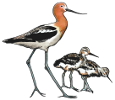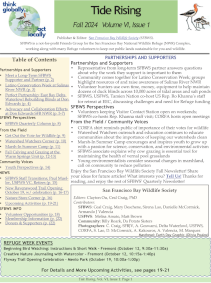Events at Don Edwards SF Bay NWR canceled due to poor air quality
The U.S. Fish and Wildlife Service decided late afternoon Friday, November 16, 2018 to cancel all indoor and outdoor events scheduled for Saturday, November 17, 2018 at the Don Edwards San Francisco Bay National Wildlife Refuge due to poor air quality.
The following 4 events have been canceled:
- Marshlands of Dreams | Sat, Nov 17 2018 - 8:30 am to 9:30 am | Visitor Center, Fremont
- Drawbridge Van Excursion | Sat, Nov 17 2018 - 10:00 am to 12:30 pm | Environmental Education Center, Alviso
- Hike the Mallard Slough Trail | Sat, Nov 17 2018 - 10:00 am to 12:00 pm | Environmental Education Center, Alviso
- Ohlone in the Marshes - Acorn Grinding | Sat, Nov 17 2018 - 1:30 pm to 2:30 pm | Environmental Education Center, Alviso
Smoke from the Camp Fire in Butte County, California caused the air quality in Northern California on Friday to dip to the worst in the world, with San Francisco's Air Quality Index (AQI) measured at a record-breaking level of 271.

Smoke from the Camp Fire near Paradise, California on November 8, 2018. Credit Giacomo Luca/ABC10 via Twitter.
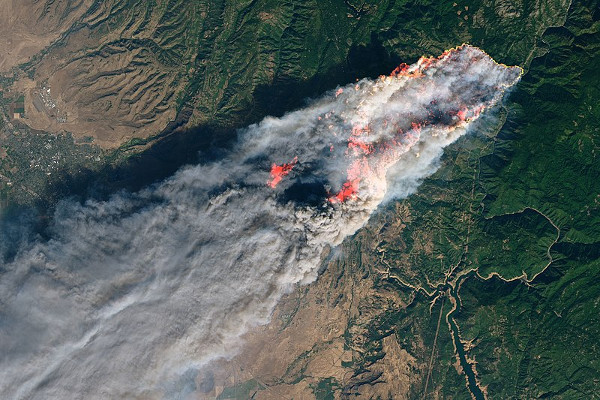
Smoke from the Camp Fire streams south towards the Bay Area on November 8, 2018. Credit: Joshua Stevens / NASA / Landsat 8 Operational Land Imager via Wikipedia
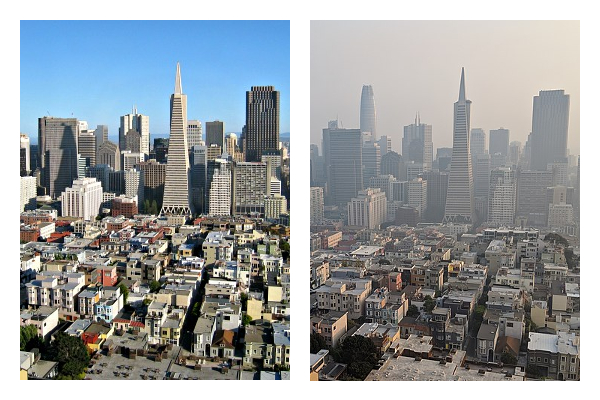
Smoke from the Camp Fire obscures the skyline of San Francisco, California as seen from the Coit Tower on November 11, 2018. Credit Kevin Payravi via Wikipedia.
According to the Bay Area Air Quality Management District (BAAQMD), the AQI numbers refer to specific amounts of pollution in the air. It’s based on the federal air quality standards for six major pollutants - ozone, carbon monoxide, nitrogen dioxide, sulfur dioxide, and two sizes of particulate matter. Levels above 300 rarely occur in the United States, and readings above 200 have not occurred in the Bay Area in decades.
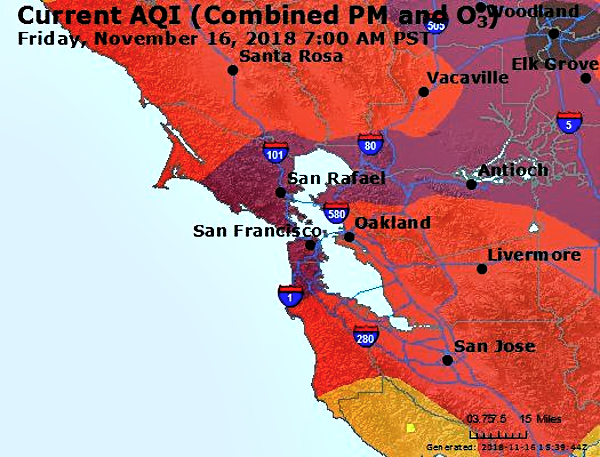
Air Quality Index (AQI) on November 16, 2018 at 7 AM PST shows poor air quality throughout the Bay Area.
According to the Environmental Protection Agency (EPA), people with heart or lung disease, older adults, and children should avoid prolonged or heavy exertion. Everyone else should reduce prolonged or heavy exertion.
EPA forecasts lower AQI numbers for late Saturday and Sunday, but the poor weather conditions will remain in place until at least Tuesday, November 20. The BAAQMD has issued a Winter Spare the Air Alert until Tuesday, making it illegal to burn wood, manufactured fire logs, pellets, or any other solid fuels in a fireplace, woodstove or outdoor fire pit.
A winter storm is forecast for Wednesday, November 21 which would blow the smoky air eastwards towards Nevada and Idaho and wash some of the particulate matter out of the atmosphere. Two more storms predicted later in the week would help tamp down the Camp Fire which, as of Friday, November 16 6:01 pm PST, had burned 146,000 acres with 50% containment; the death toll was estimated to be 71.
The fire has once again brought up the question of residential development in the Sierra Nevada wildland–urban zones. These zones have geographic features like proximity and alignment to river canyons which is what channeled wind-fed flames from the Camp Fire over foothill towns like Concow and into Paradise.
The Camp Fire, rated as the most destructive to ever hit California and the deadliest wildfire in modern American history, began under dry atmospheric conditions that warranted an “extremely critical” fire weather alert by the National Weather Service. The fire has essentially destroyed most of Paradise and Concow communities. There are currently 1,329 other communities in the Sierra Nevada at risk of catastrophic wildfire.
According to CalFire, six of the 10 most destructive wildfires in California history have ignited in the past three years.
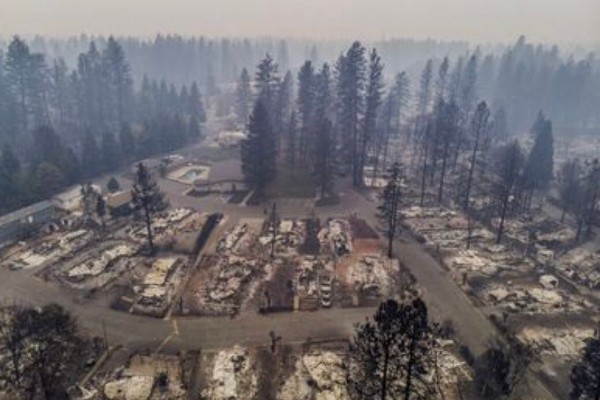
Complete devastation in Paradise, California framed by conifers at the foothills of the Sierra Nevada.
